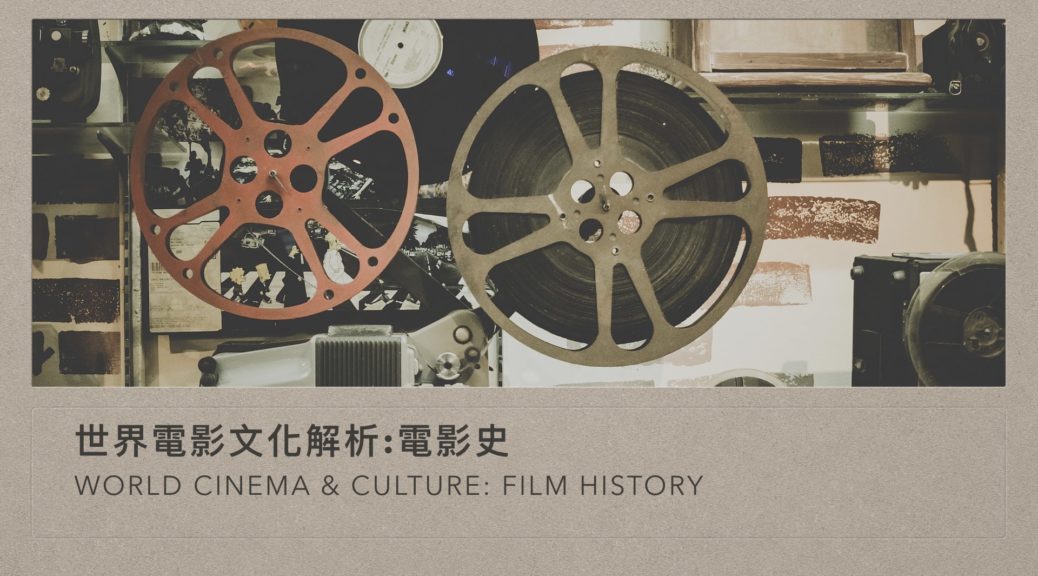電影的誕生,並非一個天才的成就,是許多人努力,共同完成的。
Film was not invented by one specific person. It was a collaboration of many peoples’ efforts.
第一章、電影的起源
動態影響最早可以追溯到伊朗出土的五千年前的陶器碗,上面繪有跳耀的羊,之後1834年英國的威廉(William George Horner)發明西洋鏡(Zoetrope),經由科學家羅傑特(Peter Mark Roget)所定義的視覺暫留(Persistence of Vision)效果,動態影像開始有了開端;靜態攝影發明後,大大推進了電影的發明,1872年麥布里奇(Edward Muybridge)在加州發表了動態研究,試圖用連續攝影,了解動物的動作。
Because of persistence of vision, motion pictures and photography became the origin of filmmaking.
第二章、創作先鋒們
美國愛迪生(Thomas Edison)的助理,狄克生 (WKL Dickson)發明第一部活動電影放映機 (Kinetoscope),可以播放16秒的影像。法國的盧米埃(Lumiere brother)兄弟加以改良,讓攝影放映機更加輕巧,在1895年公開放映《火車進站 The Arrival of a Train》,成為歷史上第一部電影。接著法國的梅里葉 (Georges Melies),進一步用魔術的手法,為電影加上不同的特效,《月球旅行記 A Trip to the Moon》是他最成功的科幻電影。1902年美國導演波特(Edwin S. Porter)的《火車大劫案 The Great Train Robbery》把電影變成是一種語言,而美國電影之父葛里菲斯 (D.W. Griffith)《國家的誕生 The Brith of a Nation》完善平行剪輯的技巧,並定義了劇情電影的長度。
Some pioneers, such as Edison, Lumber brothers, and Georges Melies, started to tell stories by film, and they all had their own special techniques.
網路影片參考:
火車進站 The Arrival of a Train:https://www.youtube.com/watch?v=1dgLEDdFddk
月球旅行記 A Trip to the Moon:https://www.youtube.com/watch?v=HJiiyrFAXVM
火車大劫案 The Great Train Robbery:https://www.youtube.com/watch?v=7XVOisZVB_I
國家的誕生 The Brith of a Nation 片段:https://www.youtube.com/watch?v=9t-7SVbLjBw
第三章、第一次世界大戰後
世界電影開始百花齊放:德國表現主義 (German Expressionism)《卡里加利博士的小屋The Cabinet of DR. Calgari 》影響全球恐怖片的風格,導演佛里茲朗Fritz Lang 與穆瑙 F.W. Murnau 為當期最優秀的導演;蘇聯則開始研究剪接,從庫洛雪夫(Lev Kuleshov)效果一直到蒙太奇 (Montage) 理論,之後由愛森斯坦(Sergei Eisenstein)於1925年拍攝的《波坦金戰艦Battleship Potemkin》集其大成。
After World War One, German Expressionism and Soviet Montage were the most influential trends for world cinema.
網路影片參考:
卡里加利博士的小屋The Cabinet of DR. Calgari 預告:https://www.youtube.com/watch?v=vGbTmzEfB3s
波坦金戰艦 Battleship Potemkin片段:https://www.youtube.com/watch?v=V__DtdHcrvc
下週我們將目光轉回好萊塢,從無聲到有聲電影,經過二戰後,電影潮流又是如何影響全球,又有哪些值得注意的作品呢?
We’ll turn our focus back to Hollywood to see the transformation from silent to sound film, and also learning films from global perspectives.








